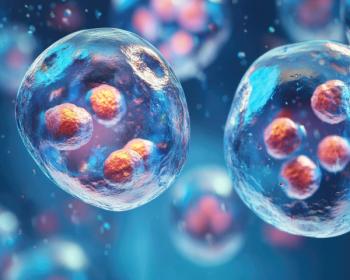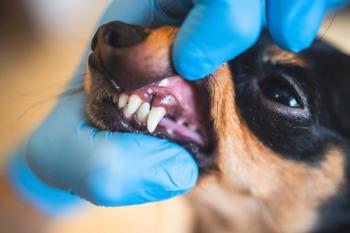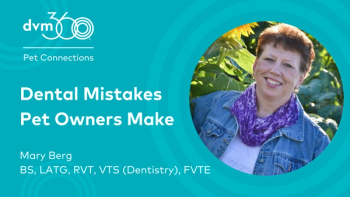
Employ oral ATP in your fight for dental health
Prevention is one of the most important parts of hygiene, as teeth are clean for only about six hours.
If you want to drive a veterinary dentist nuts, use the terms "dental, dentistry or prophy" in a sentence describing the oral hygiene and teeth cleaning visit.
Why get so bent out of shape over a word or two?
The big deal is two-fold. First, the choice of words is incorrect, and second, the process that is performed needs to include more than removing calculus from the crowns of teeth.
Referring to the procedure as a dental or dentistry is painting a broad brush of all possible dental diagnostics and care over patients that have different oral problems.
If a dog or cat is presented for an ovariohysterectomy, it is expected that the patient will be anesthetized, an incision will be made, the ovaries and uterus removed and the incision sutured. In most cases, an ovariohysterectomy is an ovariohysterectomy. It's not the case with dental care. Virtually all cases are different even though the mouths smell similar. Some teeth are in Stage 1 periodontal disease and others have Stage 4. Some patients only need minimal oral hygiene care while most require oral surgery. Referring to what we do as a dental is similar to telling a client we need to do a cardiac on a dog who presents for respiratory difficulty, arrhythmia and Grade 3-5 heart murmur.
To call the procedure a prophy or prophylaxis opens up the next can of worms. Prophylaxis is a term used in human dentistry to describe the procedure performed by a dental hygienist usually in response to a postcard requesting your visitation to the dentist. There are a number of existing definitions for "oral prophylaxis" by the American Dental Association.
A common element in these definitions is the removal of deposits from the tooth surfaces. Most of these definitions only address supragingival deposit removal from coronal tooth surfaces and the clinical crowns of the teeth. The American Academy of Periodontology presents the most comprehensive definition of the oral prophylaxis as the "removal of plaque, calculus and stain from exposed and unexposed surfaces of the teeth by scaling and polishing as a preventive measure for the control of local irritational factors."
Current definitions indicate that the oral prophylaxis is performed on patients/clients with normal, healthy mouths to maintain health and prevent the initiation of dental disease. When periodontal disease is present, removal of deposits on the teeth is no longer a preventive service. In the presence of periodontal disease, periodontal debridement (therapeutic scaling and/or root planing, also known as non-surgical periodontal therapy) is indicated.
The American Dental Association's (ADA) Current Dental Terminology, second edition (CDT-2) states that the adult prophylaxis is "performed on transitional or permanent dentition, which includes scaling and polishing procedures to remove coronal plaque, calculus and stains." It is intended for use on the patient/client without periodontal disease. Again, this is not what we do. Our clients schedule the oral hygiene care appointment once their pet has halitosis secondary to periodontal disease.
What should happen during the procedure, and what can we properly call the oral hygiene visit?
Three important actions
The procedure should be treated as three separate interrelated actions: Oral assessment, treatment and prevention (Oral ATP).
Assessment is the systematic collection and analysis of data in order to identify patient needs. Tooth-by-tooth evaluation of probing depths, mobility, furcation exposure, fractures, missing teeth, extra teeth, odontoclastic resorptive lesions, among other lesions, should be noted on the dental chart. Assessment is the first step needed to make a diagnosis and formulate a treatment plan.
Treatment: With 42 teeth in the dog and 30 in the cat each with different degrees of pathology, spending time to plan therapy makes sense. Some teeth need extraction due to support loss as a result of Stage 4 periodontal disease. Teeth affected with Stage 2 periodontal disease (<25 percent support loss) can benefit from locally applied antimicrobial (LAA). In some cases there is little pathology noted other than minimal plaque and calculus which are removed. Fractured teeth with pulp exposure are either preserved via root-canal therapy or extracted.
Prevention is one of the most important parts of the oral hygiene procedure. By cleaning the teeth, removing plaque and calculus above and below the gingiva and polishing, the mouth is "clean" for about six hours until plaque forms on the tooth surface unless a barrier is applied. If the patient is sent home without attention to prevention, there was little gained by the time, risk and expense incurred for oral hygiene care.
In our office, periodontal prevention begins before the animal awakens from anesthesia by applying a barrier sealant that electrostatically attaches to the tooth and is pressed subgingivally. Before leaving the office, the client is instructed how to control plaque through a specifically tailored program considering the willingness of pets and clients. At a minimum, we recommend clients feed their pets a VOHC-certified dental diet and weekly application of the plaque barrier gel. We teach other clients to brush their pet's teeth twice daily with a toothbrush or dental wipe impregnated with sodium hexamethaphosphate.
Endodontic damage prevention entails inspection of the pet's chew toys. Generally, removal of any device that is harder than the tooth (bones, hard nylon, ice cubes, cow hoofs) are recommended. Tennis balls also can wear away the occlusal surface causing crown and pulp damage.
An important part of prevention is the recall appointment for patients that have completed treatment.
Typically the recall interval is based on the degree of periodontal disease and the amount of home care. Generally Stage 1 gingivitis cases are rechecked twice yearly, Stage 2 every three months and Stage 3 and Stage 4 monthly. The recall appointment is an ideal time to evaluate the degree that the client has achieved home-care goals.
In the end, oral assessment, treatment and prevention is really what we are called on to do.
Dr. Bellows owns Hometown Animal Hospital and Dental Clinic in Weston, Florida. He is a diplomate of the American Veterinary Dental College and the American Board of Veterinary Practitioners. He can be reached at (954) 349-5800; e-mail:
Newsletter
From exam room tips to practice management insights, get trusted veterinary news delivered straight to your inbox—subscribe to dvm360.






